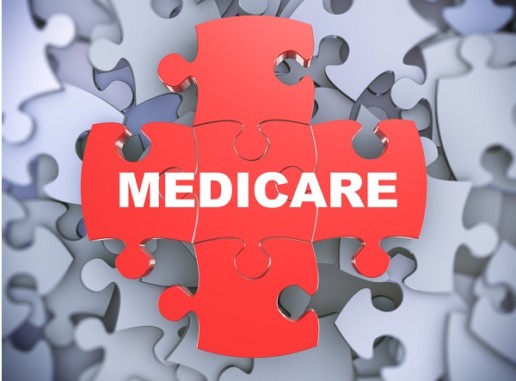ARPA: What Employers Need to Know
On March 10, 2021 Congress passed the American Rescue Plan Act (ARPA) of 2021, which was signed into law on March 11th. The ARPA attempts to address and help mitigate some of the far-reaching financial impacts of the COVID-19 pandemic. In addition to those provisions, the ARPA contains provisions that are of special interest to employers and employees.
into law on March 11th. The ARPA attempts to address and help mitigate some of the far-reaching financial impacts of the COVID-19 pandemic. In addition to those provisions, the ARPA contains provisions that are of special interest to employers and employees.
The ARPA Nitty Gritty
- COBRA Subsidy - A 100% premium subsidy is provided, funded through employer tax credits.
- FFCRA Leave - Employer tax credits have been extended through September 30, 2021.
- FFCRA Leave - Inclusion of testing and immunization as qualifying reasons for FFCRA leave.
- FFCRA Tax Credits - Definition of employee earnings eligible have been expanded.
- Unemployment - The $300 weekly increase has been extended and expanded.
- ACA - Exchange insurance subsidies are increased.
- DCAP - Contribution limits have been increased.
- Employee Retention Tax Credit - Extended and expanded eligibility for some businesses.
Let's Break It Down
COBRA Subsidy
What is it?
COBRA (Consolidated Omnibus Budget Reconciliation Act of 1986) allows employees who would lose employer-sponsored health insurance because of job loss (or reduction in working hours) to continue that insurance for 18 months. However, the employer can require the employee that elects COBRA coverage to pay the entire cost of the premium oftentimes creating a necessary, but an unexpected financial burden for the employee.
ARPA Provisions
- 100% subsidy of COBRA premiums from April 1, 2021, through September 30, 2021, for employees and their family members who lost health insurance due to involuntary termination or reduction in hours of their employment
- Allows employees who declined COBRA coverage, or elected it and dropped it, to elect subsidized COBRA
- Does not apply to employees who voluntarily terminated their employment or who qualify for another group health plan
Who Pays For It?
The subsidy is funded through the federal government through a refundable payroll tax credit.
Action Steps
- New employee notice requirements for plan administrators will be issued by the US Department of Labor
- Employees may elect subsidized COBRA starting April 1, 2021, through 60 days after receiving notice of the benefit
FFCRA Leave
What is it?
FFCRA (Families First Coronavirus Response Act) was passed in March 2020 and provided a tax credit for employers to fund two types of paid employee leave required by the law. These leave requirements expired in December 2020, but for employers that chose to continue providing FFCRA leave voluntarily, the tax credit was extended through March 2021.
ARPA Provisions
- Extends tax credit through September 30, 2021
- Adds a provision to include employee time off related to COVID-19 testing and immunization
- Increases the amount of wages eligible for the family leave credit from $10,000 to $12,000 per employee
- Provides an additional 10 days of voluntary emergency paid sick leave for employees beginning April 1, 2021
Unemployment
What is it?
Due to the COVID-19 pandemic, unemployment provisions were expanded under the previous administration to include three new federal unemployment programs. These programs were scheduled to end no later than April 2021.
- Pandemic Unemployment Assistance (PUA): Provided weekly benefits to independent contractors, self-employed individuals, and other workers that typically would not be eligible for unemployment benefits
- Pandemic Emergency Unemployment Compensation (PEUC): Provides weekly benefits to individuals who have exhausted their eligibility for all other unemployment benefits
- Federal Pandemic Unemployment Compensation: Provides an additional $300 weekly payment to individuals already receiving PUA, PEUC, or regular unemployment benefits
ARPA Provisions
- Previously established provisions that were set to expire have been extended through September 6, 2021
- Changes how unemployment benefits are taxed, exempting the first $10,200 from federal income tax for each spouse in households with under $150,000 in adjusted gross income.
ACA
What is it?
The ACA (Affordable Care Act) established health insurance exchanges for the purchase of individual health insurance coverage, as well as premium tax credits. These tax credits are not available to individuals with income at or above 400% of the federal poverty level.
ARPA Provisions
- Temporarily eliminates the income cap on subsidies for a period of two years
- Limits the total amount a household is required to pay for health coverage through the Exchanges to 8.5% of household income
- Increases federal subsidy amounts available for lower-income individuals, in some cases eliminating premium costs entirely
- Increases federal funding intended to encourage states to expand Medicaid programs (if they previously had not done so)
- All provisions are temporary and will expire in two years
DCAP
What is it?
A DCAP (Dependent Care Assistance Plan), also sometimes referred to as a dependent care flexible spending account (FSA), is an employee benefit plan that helps employees pay for the care of a qualifying dependent, such as a child or elder, as defined by Internal Revenue Service (IRS) regulations.
ARPA Provisions
- Increases annual contribution limit from $5,000 to $10,500 ($2,500 to $5,250 for married filing separately) for tax years beginning after December 31, 2020 and before January 1, 2022
- Employers meeting requirements can retroactively amend plans to incorporate the increase
Action Steps
- Employers with DCAPs can retroactively amend plans, if
- The amendment is adopted by the last day of the plan year in which it is effective; and
- The plan operates consistently with the terms of the amendment until it is adopted.
- It is recommended that you speak with your benefits advisor to ensure plans meet the requirements and stay in compliance
Employee Retention Tax Credit
What is it?
The Employee Retention Tax Credit was originally enacted with the CARES (Coronavirus Aid, Relief and Economic Security) Act. The credit was tended to encourage employers to retain employees on their payroll who were unable to work due to COVID-19 related reasons. This credit was set to expire in June of 2021.
ARPA Provisions
- Extends the credit through the end of 2021
- Expands eligibility to some small startups that began operating after February 15, 2020. Qualifying businesses will be eligible for a maximum credit of up to $50,000 per quarter even if they do not experience an eligible decline in gross receipts or a full or partial suspension
- Creates a new provision for 'severely financially distressed' employers which beginning in the third quarter of 2021 allows employers of any size to count all wages toward the $10,000 cap.
How to Speak to Your Employees About Their Intimidating Benefits.
Employers spend thousands annually to secure and offer benefits to their employees. However, a small amount of time and money are devoted to ensuring employees understand and appreciate their benefits. Properly communicating – what you say, how you say it and to whom you say it to – can make a tremendous difference in how employees think, feel and react to their benefits, employer and fellow co-workers. In this installment of CenterStage, Jamie Charlton, founding partner and CEO of Saxon Financial Services, discusses the importance of offering sound education of benefits to employees, as well as how to effectively communicate their benefits in a clear, concise manner.

Through 18 years in the financial services field, Jamie has instilled a focus on stressing to employers the importance of communicating and educating employees on all that is available currently and what may change with each upcoming plan year. Jamie believes a focus on premiums leads to “next level benefits”, an offering Saxon delivers.
The Need for Benefits Communication
Clearly communicating benefits is an increasing issue due to the complex dynamics of benefits plans. Previously, benefits decisions have been made primarily by employers. As a result, employees have not become educated consumers about their benefits or on how to implement them. This absence of engagement, as Jamie notes, causes employees to enroll in benefits that don’t fit their needs, pay too much for their coverage and not discover the full advantage of their offerings.
Good communication is important and should cover all matters regarding plan offerings to employees and their dependents alike. The goal of a proper benefits plan, Jamie states, is to be enjoyable, comprehendible, and easily accessible. However, there currently exists an infliction point in employee benefits, and the entire process is changing.
This change is a factor of two main topics: (1) the continuing rise in medical costs and health insurance premiums and (2) a truly multigenerational workforce within the workplace. So how does an employer communicate their benefits to their employees?
Employers seeking to spread the word about their benefits offerings are continuing to seek out the expertise and experience found through Saxon. Understanding there is no one-size-fits-all method for every employer, Saxon delivers tools through tested methods to get your message across to employees. We explore your company’s offerings and assist you in crafting the perfect method to communicate and educate your employees on their existing plan offerings. Jamie gives the example of wellness programs and how to broadcast these offerings. Utilizing channels in which employees are bound to check – computers and smartphones – Saxon places the knowledge of how to display these offerings through informational web pages or email blasts.
Proper Benefits Education Begins with Saxon
While the methods above serve as channels for reaching employees, nothing compares to a direct, in-house explanation of your benefits to ensure your message is addressed and comprehended. Unique to Saxon is what Jamie notes as the “secret sauce” of Saxon’s employer and employee empowerment – the annual open enrollment meeting, which consists of nothing more than a step-by-step walk through of your entire health plan. This annual ‘seminar’ within your office closely examines the “nuts and bolts” of your plan to ensure everything is in-tact, working and done so with comprehension across the entirety of the organization.
Saxon understands the complexity of the modern healthcare scene and therefore is driven to provide the most comprehensive breakdown of your plan. Have more than one? No problem – We can compose a side-by-side analysis of your plans to show not only employers but employees where the strongest assets lie. Additionally, we stress the importance of shopping around at renewal time to make sure you get the best you can for your money. Jamie explained the goal of the meeting, as well as Saxon’s continued service year-round, is to “empower employees to have a choice.”
Empowerment from Saxon comes in many different forms. Just one of these many ways discovered through Saxon’s annual meeting is placing the power of online benefits administration at the fingertips of employees. Traditionally, when an employee needed to update their plan (i.e. having a new baby in the middle of a plan year), they were entitled to visiting their employer’s office and updating their plan by filling out a form. Risks associated with this older process included the “potential loss of documentation and therefore an inaccurate reading of an employee’s coverage needs”, said Jamie. The online method saves time, stress and paper.
How Can Saxon Help?
At Saxon, we want to invest in you. We begin by engaging experts that truly listen, building successful strategies that stay focused on your vision and goals. We strive to not be a name you turn to for assistance but a knowledgeable face always at your service. Saxon exists to care, cultivate and empower through relationships, expertise and exceptional standards of service. From finding a doctor, solving a complicated claim or partnering with an insurance agency to help protect your company’s sensitive medical data to ensure you are HIPAA compliant – with us; it’s personal.
To begin the conversation with Jamie on how to better communicate with your employees, contact him at (513) 573-0129.
Addressing Long-Term Care Concerns
When insurance plan conversations lead to discussions about after retirement, there are certain hot-button issues that will swing employee conversations out of your control. When helping older employees with retirement and beyond, two topics will change the atmosphere in the room. One is the long-term viability of Social Security, which frequently comes up as a question. The second is on the conversation of long-term care, which has the possibility to make or break a retirement plan. In this installment of CenterStage, Donald McClurg, one of our financial advisors, breaks down what matters and offers answers to many of the questions concerning long-term health.

What Exactly is Long-Term Care? What’s Gobbling up Your Retirement?
You place insurance on the things that are valuable to you, such as your car, your home and possibly your pet. What about your life? Is your family of importance to you, and beyond that, what about your legacy (i.e. any funds left over from your lifetime given into your living family members)? Currently, there’s about a 50% chance a 65-year-old will require care such as an in-home nurse or a medical/assisted living facility that can deliver optimal, specialized care. For employees near retirement or the 65 years-old mark, there is a trove of questions surrounding long-term care, including:
- Should I consider a hybrid long-term care plan?
- Is the insurance worth it for me, given how insurers have been increasing the price of premiums?
- How do I avoid a government facility should I need care?
- How much money should be saved and when should saving begin?
- Can I afford this/Will I make it?
- What are my blind spots?
Unfortunately, the “right” answer to these vexing questions regarding long-term healthcare is exclusively individual-specific. Factors in the determination are dependent upon the individual’s wealth, age, desire to leave a bequest and a need for peace of mind, amongst all other factors. Donald believes, “The biggest risk to a financial plan is not running out of money, it is incurring a financial catastrophe later in life and not having protection. Right now, that catastrophe has the highest probability of showing up in the form of long-term care.”
Commonly viewed as less superior to other insurance options already being taken out of a paycheck, the fact of the matter is this is not another out-of-pocket expense placed on you, such as renters or car insurance. Rather, long-term care should be seen as a valuable choice; an investment in your future and for your family. As a “numbers guy”, Donald brings up the importance of three variables in particular: 70, 90, and 5, which mean:
- Singles 65 and older stand a 70% chance of needing long-term coverage
- Couples 65 and older stand a 90% chance of needing long-term care
- Only 5% of Americans have long-term coverage plans
The Driving Factor for Long-Term Care
Individuals display an adversity to paying for long-term coverage, as they are worried about the chance of paying for it and not needing it or having to leave their homes and live out their lives in a facility. If that’s you, you may consider a hybrid plan. Most hybrids solve the two main deterrents of long-term care insurance by:
- Allowing for in-home care (that’s right, they don’t force you into a facility)
- Return of unused premiums. (i.e. whatever portion you don’t use is returned to your beneficiary)
According to the U.S. Department of Health and Human Services, the average cost for a semi-private room in a nursing home is $6,844 per month, with the average stay being around 2.5 years. As previously listed, 52.3% is the expected percentage of people turning 65 who will have to have a long-term care need during their lives. That is over half the population of individuals turning 65 years of age who will need the assistance offered through long-term care.
The most misleading stat is that 63% of people spend $0 on long-term care. This is because roughly half of Americans have exactly $0 in savings or will have $0 when/if they need long-term care. Those individuals typically find themselves at facilities who accept Medicaid, meaning they are more than likely falling short of the care they need. Here’s the most under reported and most impactful fact of long-term care: the burden is falling on your employees. In total, an estimated $3 trillion in lifetime wages is lost due to unpaid care-giving responsibilities.
How Can Employers Offer Better Long-Term Care Solutions?
It has been said that happy employees are productive employees, and as an employer, you naturally want to increase both the productivity and well-being of employees. Of the many things your employees stress about (home, kids, work, etc.), money is always at the top of the list. In fact, a study investigating employee productivity and well-being found that employees spend 3-4 hours per week, 4-5 times per hour worried about finances. At Saxon, we are happy to help employers implement useful financial tools for their employees to leverage.
For the majority of the working world, healthcare derives from employers, thus, the head of the organization is the one responsible for properly educating employees on their coverage. As the saying goes, “proper planning prevents poor procedure.” With Saxon, employers can schedule a brief, in-house seminar with one of our stellar financial advisors and a long-term care specialist. Through these seminars, clients and employees will discover clear solutions to anything that may still have them on the fence about investing in long-term health. Employees will come to learn the real value in long-term care, such as the reason behind asset location mattering more than asset allocation.
Ready to explore your options and become one of the 0.5% of businesses currently offering long-term care insurance to their employees? If so, don’t hesitate; pick up the phone and call Donald with Saxon Financial today at (513) 609-4404 or toll-free at (800) 847-1733 to discover how you can avoid the single largest threat to your employees’ retirement.
Why Saxon Is the Right Choice for You
At Saxon, we care about you – your family, your company, your finances, and your future. We cultivate our years of practice and experience to deliver exceptional service to you every time. We empower you by placing the tools and knowledge necessary into your hands to deliver remarkable returns on investment. An engagement with Saxon is unique. This is because we have invested in developing a culture where business is personal. Our clients are the central heart of our organization; meaning that without you we have no purpose.
To Saxon, experience matters. We know that outcome is crucial, but to us, it matters how we get there. By taking intentional action in an authentic manner, we are a catalyst for your success that is positively refreshing. We invite you to explore the Saxon way.
Medicare: Why an Advisor Makes All the Difference
Often those approaching Medicare eligibility are overwhelmed by the quantity of information available – and understandably so. As a form of insurance, Medicare is fundamentally different from other group/employer, individual, or family plans in that it is centered around the individual, yet any decisions made could potentially affect family members. In order to understand the costs, benefits, plans, and overall structure of Medicare, professional advice is strongly recommended when weighing options. That’s why, in this installation of CenterStage, Rob Glover, our Senior Solutions Advisor at Saxon, provided the following insightful information. Generally speaking, Medicare plans are explored during a significant lifestyle change. Having an insurance sales agent to facilitate retirement planning can help in adjusting Medicare options.

A Two-Way Relationship
Insurance agents are able to conform Medicare options around desired preferences and requirements. Each beneficiary is unique and therefore deserves a plan that delivers a standard of quality that is suited to varying budgets and ways of life. Agents can act as personal advisors and offer close collaboration when sifting through insurance plans. After becoming aware of defined healthcare coverage needs, Medicare advisors can narrow the search and find a solution that will safeguard both the individual and his or her family from looming financial damages.
It’s best to have a licensed agent with years of experience in Medicare. While textual knowledge is certainly important, learned wisdom is paramount in avoiding pitfalls throughout the process. Agents with real experience in the field are the best guides in navigating the processes, policies, and terminology of Medicare. Also, there are benefits in maintaining a relationship with them, since they are well-versed in the details of plans germane to the area. They are likely more familiar with supplier and provider networks and, using this knowledge, can provide guidance on which Medicare plan to choose.
The beneficiary-advisor relationship doesn’t end after the sale. In fact, they are often an advocate for many years after, offering consultations that address subsequent concerns with coverage. Medicare advisors can help review healthcare needs on a yearly basis to ensure the plan is lining up with changing criteria.
Services Worth Using
Independent advisors can offer many options across a multitude of carriers. Some agents are able to compare dozens of providers by contracting many different insurance companies. This method of contracting also aids in eliminating biases during plan research and comparison. The independent advisor can assist in making an informed decision on a Medicare insurance plan that is in line with the individual needs of the beneficiary. There aren’t any fees associated with merely utilizing an advisor. To elaborate, the rates linked to insurance plans already cover advisors’ commissions and thus render the decision on whether or not to employ one free from frugal urges. Therefore, there’s no reason not to seek the advice of a discerning sales agent to make the enrollment process easier. Licensed sales agents in the Medicare field take part in numerous hours of continued education and training annually. They are knowledgeable to pertinent information that could shape the decision-making process in addition to their understanding of a client’s defined parameters. Nevertheless, beneficiaries can only change insurance once within a year and can wind up “stuck” in a chosen plan unless the said beneficiary is eligible for a Special Enrollment Period. Regardless of position in the retirement process, time becomes increasingly more important. Utilizing an informed advisor will lead to time saved on plan comparison and research as they can help pinpoint a solution that fits the circumstances rather than waste time through trial and error. Licensed advisors are able to grant a one-stop shopping experience. Through innovative technology, they can access any and all relevant information at any time. Some create webinars regarding important issues, answer frequently asked questions, and elicit 24/7 assistance. Within some websites, beneficiaries can enroll in Medicare Advantage plans, request proposals, and research and compare options.
If you would like to learn more, contact Rob Glover at 513.703.7720 or rglover@gosaxon.com.
What’s the Deal With 529 Plans?
It’s never too early to invest. A 529 Savings Plan, prudent financial direction, and steady contributions are paramount to a successful college fund. Due to the intricacies of the financial instrument, an advisor is recommended to guide contributors throughout the process. In this installment of CenterStage, Cyrus Dhatigara – an investment advisor representative – has presented new contributors with his advice on 529 Savings Plans and how they can be beneficial for costly tuition fees.
How are they beneficial?

The 529 Savings Plan is a great way to save money for college. First, there are comparatively high limits on the amounts that parents or grandparents can contribute. Second, these plans are tax free: unlike with a tax-deferred 401(k), funds are exempt from taxation once they are eventually withdrawn. Third, mutual fund companies that are affiliated with state Tuition Trust Authorities are able to offer professional management leveraging a diverse array of funds. Fourth, 529 Savings Plans allow contributors to change the focus of their investments, typically starting with an aggressive strategy during a child’s younger years and moving towards a more conservative approach when he or she gets older.
How much to start?
Parents would naturally like to know how they can foster such an investment. Most have the basic idea of what a 529 Savings Plan is, but not much more. Seeking sound financial advice should fill any gaps in proficiency. Also, there’s no excuse to wait – it takes a mere $25 per month to initiate a plan. Further, 529s can make use of automated checking account withdrawals to enable healthy growth. This is a flexible product, though annual contributions will likely need to increase on that basis. The maximum limit per child is around $300,000; parents can contribute whatever they want and supplement the fund via one-off investments from grandparents.
What do they cover?
Anything that’s necessary for class is covered: books, tuition, fees, and computers or iPads, among other things. In fact, a 529 Savings Plan even covers grad school. Since the investments are earmarked for higher education, money is transferred directly from the mutual fund to the university without any contributor intervention. As a result, parents shouldn’t be concerned about quarterly or semester requirements, and there isn’t room for IRS violations since their only further interaction is taking a receipt.
How can Saxon help?
Cyrus crafts strategic savings plans around children to help fund college tuition, while providing the tools for protection and investment. His largest passion project is an extension of the daily work he does. He revels in contributing financial education to all ages. Saxon’s goal is simple, to mold this program to fit contributors’ individual needs, right from the beginning. We know college savings plans are not one-size-fits-all. Whether you are looking to save for tuition, room and board fees, books, supplies or required computer equipment and technology, Saxon can help.
Please contact Cyrus Dhatigara with any questions you may have on 529 Savings Plans. You can reach him at 513.236.9334 or send him an email at cdhatigara@gosaxon.com.
Download the PDF.
Fresh Brew With Tabitha McIntosh
Welcome to our brand new segment, Fresh Brew, where we will be exploring the delicious coffees, teas, and snacks of some of our employees! You can look forward to our Fresh Brew blog post on the first Friday of every month.
“Each client is different!”
Tabitha enjoys helping customers and prides herself on the understanding of their needs and the discovery of knowledge along the way. She especially enjoys following through with the customer and learning new things that will help her excel in her career and better service future clients.

Favorite Brew
Pumpkin Spice Latte
“I love grabbing this from either Starbucks or Royce Cafe in Lebanon!”
Favorite Snack
…Nothing!
“I like my coffee on it’s own. There are plenty of calories in each cup!”
LIMRA aims to shape benefits data exchange standard
How will LIMRA shape the benefits data exchange standard? Find out in this article from Benefits Pro.
LIMRA wants to help develop electronic data transmission standards for the employee benefits market.
The life and health market research group, has formed an alliance with the Object Management Group (OMG), a nonprofit technology standards group based in Needham, Massachusetts.
LIMRA has been working on the benefits market data standards issue for more than a year.
To help benefits market players develop standards, OMG has set up a Workplace Benefits Domain Task Force. The chairs of the new task force are Edie Bice of Unum; InAh Chambers of LIMRA; and Aaron Roby of Texas Life.
The task force organizers hope to develop data exchange standards for non-medical, non-retirement benefits.
The standards could apply both to group benefits and to individual benefits products sold at the worksite.
Organizers say the new task force will be open to benefits brokers, independent benefit plan administrators, benefits administration technology vendors, and insurers that offer non-medical, non-retirement employee benefits products.
The task force will start its first face-to-face meeting June 18, in Boston.
Source:
Bell A. (4 May 2018). "LIMRA aims to shape benefits data exchange standard" [web blog post]. Retrieved from address https://bit.ly/2wfIZey
These 3 industries are leading the way in HDHP adoption
Interested in knowing which industries are leadig the way in HDHP adoption? Check out this blog article.
Employers in the education, health care, manufacturing and retail sectors are using a variety of tactics to drive selection of HDHPs, with varying levels of adoption from employees, so says the report, based on anonymous employee benefit election data on the Benefitfocus Platform from more than 540 large employers in those sectors.
In the education sector, HDHPs are becoming less the exception, more the rule.
“Back in 2016, traditional health plans like PPOs and HMOs represented an overwhelming majority of health plan offerings and elections among employers in the education industry,” the authors write. “But just two short years later, things look completely different. In an industry known historically for its generous health insurance benefits, the HDHP has made remarkable gains in popularity.”
The share of employers in the education sector offering at least one HDHP has more than doubled since 2016, from 23 to 50 percent, according to the report. Employers have done a lot to make HDHPs attractive — they now pay 87 percent of the total HDHP premium and have doubled their contribution to employees’ HSAs since 2016. Their efforts have worked — 34 percent of employees selected an HDHP when given the choice for 2018, up from 20 percent two years ago.
In the health care sector, employers are encouraging consumer-driven plans with moderate success, according to the report.
“Over the past two years, employers in the health care industry have taken steps to shift more health insurance costs onto employees, while providing ways to help them manage the additional burden,” the authors write. “But there remains a long runway of opportunity for these organizations to boost adoption of the consumer-driven health care model.”
The number of employers offering HDHPs has nearly doubled in two years, with 73 percent offering at least one in 2018, up from 41 percent in 2016. However, despite there efforts, only 27 percent of employees selected an HDHP for 2018. Health care employers are likely trying to raise the adoption rate by transferring more PPO plan costs onto workers — the average employee premium contribution for a single-coverage PPO is up 24 percent from 2016.
In the manufacturing sector, despite boom in HDHP offerings among those employers, more of their workers are still opting for PPOs. “Manufacturing employers have displayed a particularly strong and growing enthusiasm for HDHPs in recent years,” the authors write. “But cost-sharing dynamics appear to be driving employees away from these plans and back into traditional health plans. Meanwhile, voluntary benefits maintain above-average popularity among both employers and employees.” The majority (88 percent) of employers in manufacturing now offer an HDHP, up from 54 percent in 2016. However, the percentage of employees electing an HDHP continues to decrease, while PPO participation grew from 36 percent in 2016, to 57 percent for 2018.
The report also found that voluntary benefits have become increasingly prevalent among manufacturers, with nearly 60 percent of employers offering at least one for 2018, up from 34 percent in 2016.
In the retail sector, employees shoulder more health plan costs, while more employers offer voluntary benefits to supplement coverage, according to the report.
“As employers in the retail industry look to keep benefit costs under control, health care is getting more expensive for their employees,” the authors write. “And while voluntary benefits offer additional financial protection for the majority of these workers, there remains a long runway of opportunity for health spending accounts to help them manage their out-of-pocket liabilities.”
Retail employers offering at least one HDHP increased from 55 percent in 2016 to 76 percent. Nearly half (40 percent) of their employees elected HDHPs, but premiums for these plans are rising, with the average annual employee contribution for a single-coverage HDHP up nearly 20 percent since 2016.
Despite HDHP prevalence, retail employers contributed 40 percent less to HSAs than the average for all employers, and employees contributed 20 percent less than peers in other industries. To supplement coverage, 56 percent of employers offered at least one voluntary benefit, up from 43 percent in 2016.
“Everywhere you turn there’s a story about rising health care costs,” says Ray August. “What employers in every industry have in common is the struggle to economically provide the best plans and care for their employees.”
Source:
Kuehner-Hebert K. (7 May 2018). "These 3 industries are leading the way in HDHP adoption" [web blog post]. Retrieved from address https://bit.ly/2FUf4Ii
4 actions HR departments should take to prepare for GDPR
In this article from Benefits Pro, we are going to take a look at the top four actions HR departments should take to prepare for GDPR. Continue reading:
A few years ago, Mark Cuban famously advised that data is the new gold. However, things have changed since the Cambridge Analytica and Facebook scandal as the public has become increasingly concerned with how companies are using their personal information.
As businesses prepare for the arrival of the General Data Protection Regulation (GDPR), leaders could be forgiven for thinking that data can become more of a liability than an asset – depending on its handling.
GDPR is a much-needed update to data protection that aims to strengthen and unify security for everyone in Europe. The legislation goes live on May 25, 2018 and will enforce all businesses to secure and manage the personal data of all individuals living within the European Union.
After years of gathering data, we are now entering a new era where trust and transparency are the new global currency. GDPR will affect all businesses that store any aspect of personally identifiable information of all individuals, both customer and employee, living in the EU, whether or not that business has an office there.
The scope of GDPR includes employee data, so it directly affects HR departments. As a result, companies need to update processes around the lifecycle of basic employee personal data such as health information and family details.There are many resources surrounding the topic; some on which include free, user-friendly materials published by the EU governments in addition to those that act as “scaremongers” seeking to try to trick companies into paying for compliance help. What makes it most difficult for HR professionals is interpreting the rule, which was written broadly to address any type of personal data and applying it to employee data and HR practices, specifically. Compliance cannot be achieved overnight or ready for the big “go live” in May either. An entirely new way of working to understand where every aspect of data is obtained, how it is used, and where it is stored needs to be put in place. In short, this is not a job for the IT department alone, but rather requires a highly collaborative effort across the company. Silos will need to be broken down to efficiently unify all departments such as sales, marketing, finance, IT, and legal to understand the scale of how much data businesses are actively storing. But what do HR professionals need to know?
1. Create new or updated privacy policies
New privacy policies likely need to be created and implemented to reflect the new rights of employees. Equally, all existing policies should to be reviewed to determine which ones require updating to fall in line with GDPR’s transparency and accountability requirements.
In addition, a key difference between the current EU data rules and the GDPR is the emphasis on individual rights. Employees can now request that their data be completely erased at any time or request a copy of their data thats on file. HR teams need to be prepared to uphold these demands.
2. Revisit outdated processes
Reviewing HR processes, like onboarding a new employee, will help reveal what data you’re collecting that you don’t necessarily have a need for. Minimization is key to successful GDPR compliance; less is more. Implementing minimization will likely require you to update protocols and rethink processes that include the requesting of personal data from employees. For example, the onboarding and transfer of employees will need to be revisited to ensure that data collection practices meet GDPR requirements. You may also need to revisit your record retention policies and processes for ex-employees.
Ask your partners and vendors for their GDPR and compliance plan as risk is shared when they handle employee data on your behalf…
3. Allow data access only to those who really need it
The rise of shadow IT and sensitive data being increasingly stored in the public cloud combined with malware in cloud SaaS applications are the more significant concerns. CIOs and IT leaders now have the power to implement stronger cybersecurity and secure data-management policies that will protect personal data now and in the future. Security elements of the legislation demand that appropriate technical and organizational measures are taken to ensure all employee data is kept safe. HR’s responsibility is to ensure that only those who need access to personal data to do their job have access to it. Making sure that the right people have the appropriate access levels within a digital HR platform – or keys to the file cabinet – is the secret to successful compliance.
4. Centralize your employee file management
Learning about and documenting every element of employee data, where it is stored, and who has access is a process made much easier with centralized digital files. Going forward, a digital system makes it possible for HR to implement and internally audit procedures that will ultimately provide them with the visibility into compliance as well as potential vulnerabilities. GDPR and employee expectations means companies need to shift from a reactive to a proactive approach. A digital system is necessary to enable HR with visibility across their data, securely manage access to the data and implement at scale and policy changes.. With GDPR, the stakes are increasing yet again for companies; HR now must think about collecting the least amount of data they need to get the job done and being completely transparent around its usage, rather than burying this information in complicated terms and conditions. Sure, this will dramatically change the way companies globally deal with EU citizens’ data, but it’s something to be embraced rather than feared. By showcasing implementation of these new data protection practices, a brand can actually build its reputation. While board members might fear the ramifications of the GDPR, we all know that the breach of company data is something far worse. For these reasons alone, GDPR should be seen as an opportunity for every employee to focus on protecting their personal data or at least understanding their responsibilities. And for employers, take this opportunity to become more open to a review of outdated practices and investing in and building technology that can complement this forward thinking approach. Data protection compliance is now an on-going priority and its beneficial for all to take seriously.
Source:
Gouchan A. (4 May 2018). "4 actions HR departments should take to prepare for GDPR" [web blog post]. Retrieved from address https://bit.ly/2wl6ZwU
10 states with the most Social Security recipients
Which state economies will face a greater impact when cutting social security payments? Find out in this article for BenefitsPro.
More than 51 million American retirees or their survivors collected Social Security benefits last year, according to the Social Security Administration.
Those payments function as the foundation for their economic security during retirement, providing 90% or more of the income of almost one-third of those beneficiaries and the majority of the cash income for about 60% of them, according to a new report from the Democratic staff of the Joint Economic Committee (JEC).
The report, “Social Security: A Promise to American Workers and Families,” focuses not only the benefits to recipients who depend on those payments but also the broader economic costs of reducing them, which has been a priority for the Republican leadership in Congress.
Democratic members of Congress expect Republicans will continue to push for those cuts especially because the U.S. deficit is expected to grow by more than $1 trillion over the next 10 years as a result of the recent tax cut legislation.
“Slashing Social Security would not only have a negative impact on beneficiaries and their families, but have a devastating impact on the economy as a whole,” said Sen. Martin Heinrich, D-N.M., ranking member of the JEC, in a statement accompanying the release of the report.
According to the report, Social Security supports about $1.4 trillion in goods and services in the U.S. economy, accounting for more than 9 million jobs nationwide. Reducing benefits by 25% across the board would cost $349 billion in economic output, 2.3 million jobs and about $83 billion in employee compensation, the report notes, adding that such cuts would also put pressure on the families of beneficiaries to make up the difference.
In the gallery above are the 10 states with the most Social Security recipients and their average monthly benefit.
Source:
Napach B. (7 May 2018). "10 states with the most Social Security recipients" [web blog post]. Retrieved from address https://bit.ly/2HWmHnt













